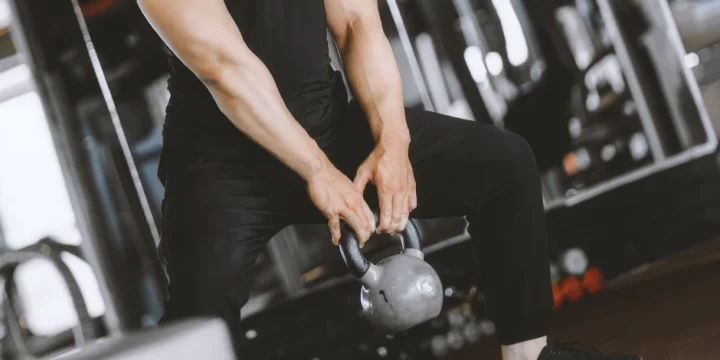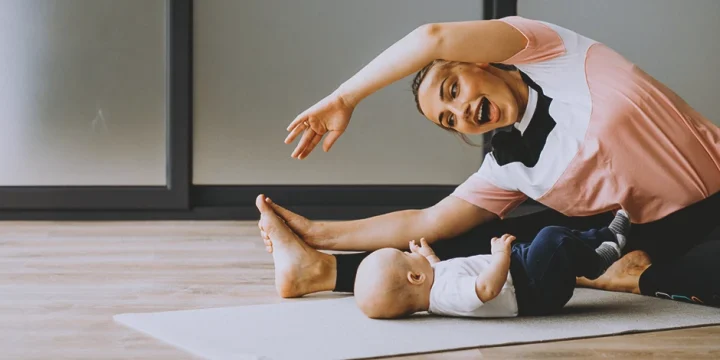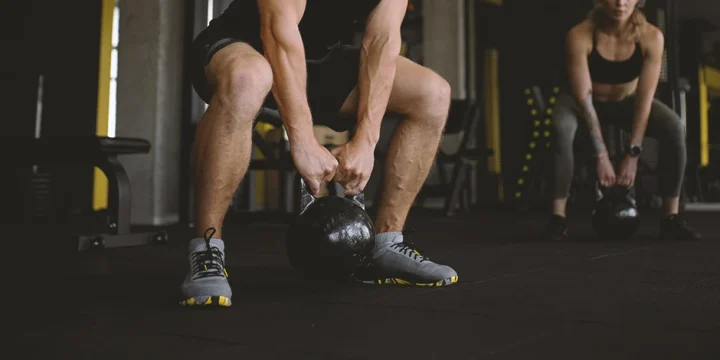As a seasoned fitness coach, I've seamlessly incorporated plyometric exercises, or "jump training," into diverse client routines.
Recognizing the benefits of starting with low-impact activities for improved strength, speed, and coordination, our team investigated beginner-friendly exercises, revealing their unique advantages.
This article shares insights on the basics, variations, and workout tips for seamlessly integrating these exercises into your fitness routine.
Quick Summary
- Beginner-friendly plyometric exercises include pop squats, split squat jumps, tuck jumps, skater hops, burpees, box jumps, and reverse lunges to knee-up jumps.
- Beginners benefit from plyometric exercise routines by boosting muscle power and speed while engaging multiple muscle groups.
- Research from the National Institute of Health suggests that plyometric exercises can improve coordination by training the nervous system, making movements more automatic during activities.
- As a fitness trainer, I've personally found that incorporating high-intensity workouts with explosive full-body movements highlights the importance of complementing such routines with proper supplements.
Plyometric Exercises Variations

Explore these 12 plyometric exercise variations that our team has found effective for enhancing your fitness routine.
1. Pop Squat
The pop squat is a dynamic plyometric exercise that enhances the strength and power of your quads, hamstrings, glutes, and calves.
To perform this exercise:
- Start in an upright stance, feet at shoulder-width distance.
- Leap up, drawing your knees towards your chest.
- Land gently, immediately transitioning into a squat position.
- Propel upwards explosively, repeating the sequence for several repetitions.
2. Split Squat Jump

The split squat jump is a high-intensity plyometric exercise that stimulates the hamstrings, quadriceps, and glutes. It involves switching from a squatting position to a jumping squat, adding an explosive element to the traditional squat, as per PubMed [1].
To perform this exercise:
- Assume a starting position similar to a lunge.
- Descend into a squatting position, bending both knees.
- Push off explosively from the balls of both feet, switching your legs in mid-air.
- Land back into a lunge position with the opposite foot forward.
- Continue with jump squats for several repetitions.
Related Articles:
3. Reverse Lunge to Knee-Up Jump
This plyometric exercise is a fantastic blend of strength and cardio. It targets your quadriceps, hamstrings, and glutes while boosting your heart rate.
To perform this exercise:
- Begin in a standing position.
- Step back with your right foot. Lower your knee to the ground into a reverse lunge.
- Push off your front foot, propelling your right knee upward into a jump.
4. Tuck Jump
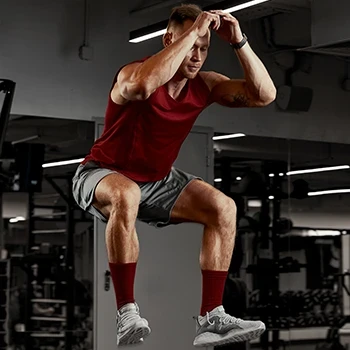
The tuck jump is an intense lower-body plyometric exercise that engages your quadriceps, hamstrings, glutes, and core for a full lower-body workout.
To perform this exercise:
- Stand straight with your feet hip-width apart.
- Bend your knees slightly, then explode, bringing your knees toward your chest.
- Land softly in a controlled manner, preparing for the next jump.
5. Jump Squat With Heel Tap
The jump squat with heel tap is a dynamic plyometric exercise that enhances leg power and agility. It involves a blend of squat jumps and jumping jacks motions, demanding more from your quads, hamstrings, glutes, and calves.
To perform this exercise:
- Start in a squat-like position with your feet hip-width apart.
- Explosively push off the ground into a jump.
- While in the air, quickly tap your heels together.
6. Skater Hop
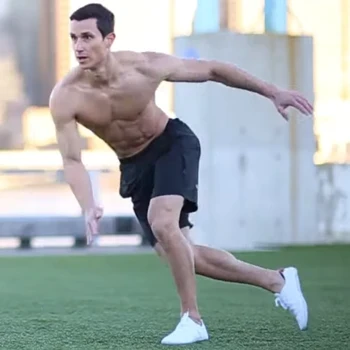
The skater hop integrates jumping movements, challenging balance, coordination, and lower body strength. It’s a low-impact alternative to box jumps, as per the Specific Physical Therapy Journal [2].
To perform this exercise:
- Start in a slight squat position.
- Jump sideways to the left.
- Take your right leg behind to your left ankle without touching the ground.
- Change direction by jumping to the right with your right leg.
7. Burpee
The burpee is a full-body movement that combines strength and cardio into a high-intensity exercise. It efficiently targets various muscle groups and is beneficial to any plyometric workout.
To perform this exercise:
- Stand straight with feet hip-width apart.
- Go low into a squat position and place your hands on the ground.
- Jump to reach a plank position, keeping your body straight.
- Perform a push-up.
- Jump to the initial position.
- Stand up and jump, clapping your hands overhead.
- Land gently and repeat the movement.
8. Box Jump
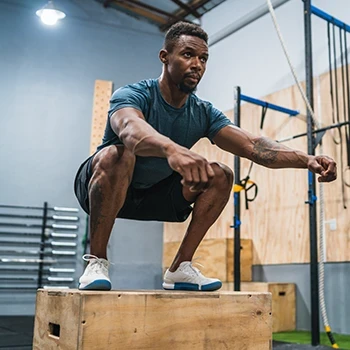
The box jump is a plyometric exercise targeting the core, glutes, quads, hamstrings, and calves.
To perform this exercise:
- Place a sturdy box in front of you, starting with a lower height.
- Stand a short distance away, feet hip-width apart.
- Swing your arms and bend your knees into a semi-squat for momentum.
- Explosively jump onto the box, landing softly with slightly bent knees.
- Stand up straight on the box, fully extending your hips and knees.
- Step back down and repeat.
As a fitness trainer working with clients, I always recommend adjusting the height of the box as your confidence and strength increase.
9. Single-Leg Deadlift to Jump
The single-leg deadlift to jump is an option for a plyometric movement that effectively engages muscles and emphasizes power development in the legs.
To perform this exercise:
- Stand straight with feet hip-width apart.
- Lean forward on one leg, extending the other behind you.
- Reach your hands toward the ground.
- Swing the extended leg forward and simultaneously jump on the standing leg.
- Land softly on the same leg, repeating the movement.
10. Lateral Lunge to Runner's Jump
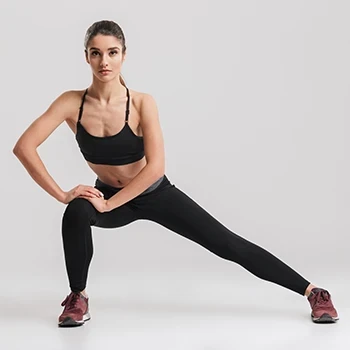
The lateral lunge to runner's jump is a unique plyometric exercise that targets your quads, hamstrings, and glutes while engaging your core and challenging your stability.
To perform this exercise:
- Stand tall with your feet hip-width apart.
- Take a big step to your right.
- Bend your right knee while pushing your hips back into a lateral lunge.
- Push off your right foot to return to standing.
- Then immediately drive your right knee upward and hop on your left foot.
- Land softly and immediately step back into a lateral lunge to complete one rep.
11. Hands-Release Push-Up
The hands-release push-up is an upper-body plyometric workout with a twist to traditional push-ups. By disengaging your hands at the bottom of the exercise, you activate your chest, shoulders, and triceps uniquely, enhancing strength and endurance.
To perform this exercise:
- Take a high plank position.
- Lower your body to the floor, maintaining a tight core and straight body line.
- Once your chest touches the floor, lift your hands off the ground.
- Plant your hands back on the ground and push back to the starting position.
12. Burpee Into Tuck Jump
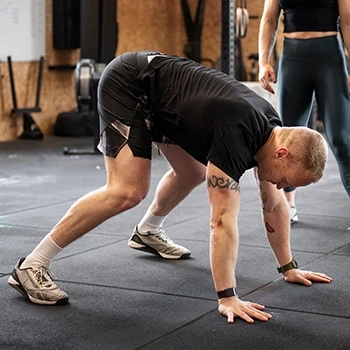
The burpee into tuck jump is a powerful plyometric exercise that combines the full-body engagement of a burpee with the explosive lower-body strength training of a tuck jump.
To perform this exercise:
- Begin in a standing position.
- Drop into a squat, placing your hands on the floor before you.
- Kick your feet back, landing in a high plank position.
- Quickly return to the squatting position.
- Spring upward into a tuck jump, bringing your knees towards your chest.
- Land softly and immediately proceed into the next repetition.
Resistance Band Workout Routine to Build Muscle

Here's an entire plyometric routine for beginners. Follow through for a high-intensity, full-body workout, and muscle-building.
Warm-Up:
- Light Stretching: 2 sets of 10 on each side
- Arm Circles: 2 sets of 10 reps in each direction
- Squats: 2 sets of 10 reps
- High Knees: 1 minute
- Lunges: 2 sets of 10 for each leg
Workout Routine:
- PopSquat: 3 sets of 10-15 reps
- Split Squat Jump: 3 sets of 12-15 reps
- Reverse Lunge to Knee-Up Jump: 3 sets of 12 reps per side
- Tuck Jump: 3 sets of 15-20 reps
- Jump Squat With Heel Tap: 3 sets of 10 jumps
- Skater Hop: 3 sets of 15-20 reps
Cooldown:
- Light Walking: 5 minutes
- Deep Breathing: 3 minutes
- Seated Stretch: 2 sets of 30 seconds on each leg
- Child's Pose: Hold for 1 minute
- Chest Stretch: Spend 2 minutes
- Cobra Pose: 2 sets of 30 seconds
What is a Plyometric Exercise?

A plyometric exercise is a dynamic, high-intensity movement that boosts muscle power, speed, and agility. They are integral to a fitness routine and feature explosive jumps or hops.
In my training experience, these workouts can enhance overall athletic performance through the stretch-shortening cycle in muscle fibers, leading to improved cardiorespiratory fitness, increased fat burn, and effective strength training, as supported by ResearchGate [3].
“Research indicates that plyometric training positively affects physical strength, speed, and balance. These exercises activate the stretch-shortening cycle of muscles, contributing to increased power and performance.”
- Markovic, G. British Journal of Sports Medicine
The Basics of Plyometric Training
Plyometric training, in its simplest form, involves exercises that allow muscles to exert maximum force in the shortest possible time, according to ResearchGate [4].
This training principle focuses on "loading" the muscle, followed by a quick contraction, which effectively trains the muscles and nervous system for enhanced performance.
This method increases speed and power, making it a staple in sports training and general fitness routines.
“Plyometric training effectively improves muscle power, running speed, change of direction speed, and jumping performance, and it should be integrated into the conditioning routines of young athletes.”
- Ramírez-Campillo, R. Universidad Andrés Bello
Why Choose These Workouts Over Others?

You should choose plyometric workouts over others because they stand out from traditional exercises due to their unique blend of strength, cardio, and flexibility training.
This approach relies on your body weight, removing the need for complex gym equipment.
When integrated into an exercise program, they enhance muscular endurance and power, improving overall athletic performance.
“Plyometric training combines strength, speed, power, and neuromuscular coordination, often not achieved with traditional resistance training programs. This training method is particularly effective for athletes that require quick and powerful movements in their sport.”
- Ronaldo Kobal, Nucleus of High Performance in Sports
Beginner Tips When Performing Plyometric Exercises

Starting with plyometric exercises as a beginner requires careful consideration for optimal results and safety.
Here are some valuable tips:
- Keep your core tight for balance.
- Use your muscles' full range to improve power.
- Be mindful of your muscles in both the jumping and landing phases.
- Step up the challenge over time to build muscles.
- Eat enough protein to improve muscle repair and growth.
Comparison With Conventional Routines
Plyometric training is more intense and multidisciplinary. Yet, there’s more to say.
Here’s how this methodology works compared to traditional routines:
- Intensity: Plyometric exercises involve dynamic, explosive movements, contrasting with the slow, controlled motions of conventional exercises.
- Muscle engagement: Plyometrics engage multiple muscle groups simultaneously, promoting full-body fitness, whereas other workouts focus on isolated muscle groups.
- Cardiovascular benefits: Plyometric training enhances cardiovascular health due to its high-intensity nature, while traditional workouts' focus on this aspect varies.
- Equipment: Plyometric workouts require minimal equipment, often relying on body weight alone, unlike conventional routines that often need gym equipment.
- Skill Development: Plyometrics enhances agility, balance, and coordination, beneficial for sports performance, a focus not always found in traditional routines.
FAQs
How Effective Are Plyometric Exercises for Beginners?
Plyometric exercises can be highly effective for beginners because they enhance muscular power, agility, and balance.
How Long Should Rest Periods Be In a Beginner's Plyometric Workout?
As a beginner, your rest periods in a plyometric workout should be between 1 and 2 minutes per set.
Should Warm-ups Be Included in a Plyometric Exercise Training?
Yes, warm-ups should be included in plyometric exercise training. They prepare the muscles for the explosive movements performed during the routine, reducing the risk of injuries.
References:
- https://pubmed.ncbi.nlm.nih.gov/17347316/
- https://ptj.uswr.ac.ir/browse.php?a_id=382&sid=1&slc_lang=en&html=1
- https://www.researchgate.net/publication/248384281
- https://www.researchgate.net/publication/367002024
About The Author
You May Also Like
